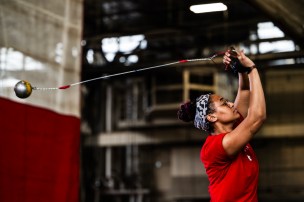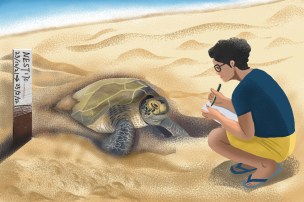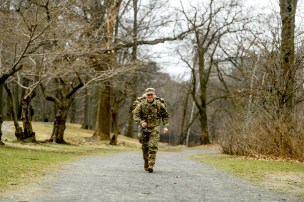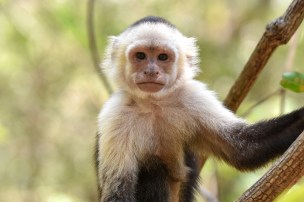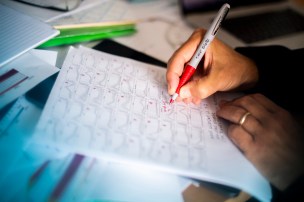Published on
Northeastern co-op goes bananas with Santa Rosa Primate Project in Costa Rica
A field research assistant for a primate conservation organization, biology student Leah Orman spends her days studying monkeys and bushwhacking through a Costa Rican forest.
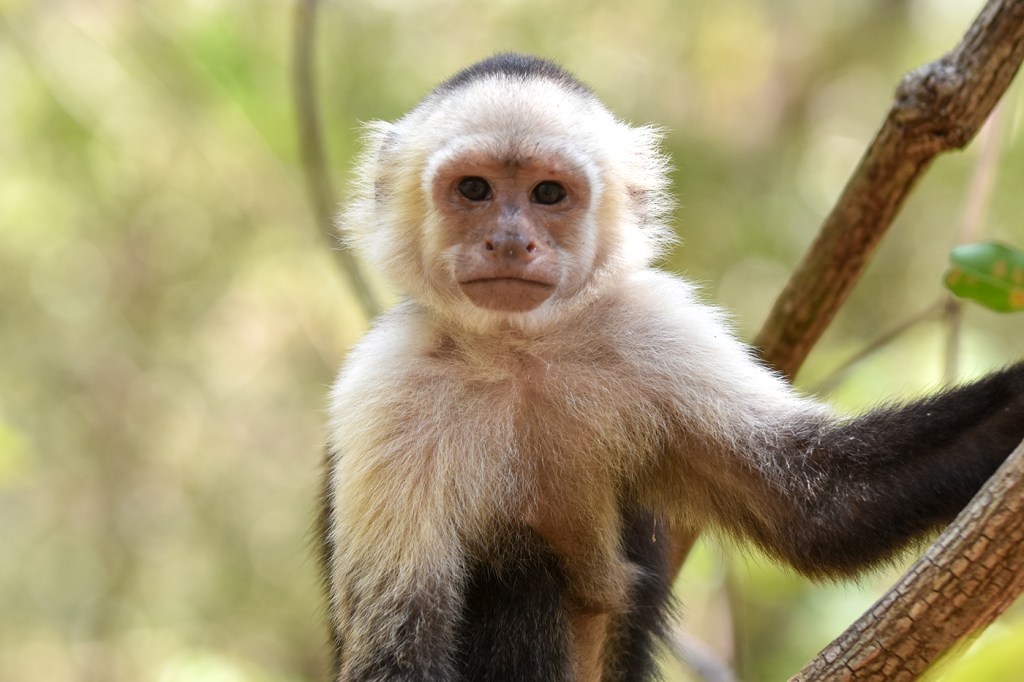
Leah Orman has some particularly unruly co-workers.
They are small, fast and love climbing trees — and no, they’re not children. They are capuchin monkeys living deep in the tropical dry forest of Costa Rica’s Santa Rosa National Park. For Orman, a biology student at Northeastern University, this is her office, and there are no bad views.
Orman is not just in Costa Rica monkeying around. For her Northeastern co-op, she’s working as a field research assistant for the Santa Rosa Primate Project, a Costa Rican conservation and research organization. The Santa Rosa Primate Project has been studying primates for decades with the intent of learning more about them in order to conserve the animals and their habitats, especially given the effects of climate change on ecosystems across the globe.
For a student whose interests lie at the intersection of research, veterinary medicine and wildlife, Orman says she couldn’t have asked for a better experiential learning opportunity.
“For any sort of wildlife conservation, the more knowledge we can gain about the species and how they exist in the ecosystem, it allows us to help them,” Orman says.
Santa Rosa National Park is home to several kinds of primates, including spider monkeys and howler monkeys, but Orman’s work is focused on white-faced capuchin monkeys. They have become really well known because of their appearances in films and TV shows like the “Pirates of the Caribbean” franchise.
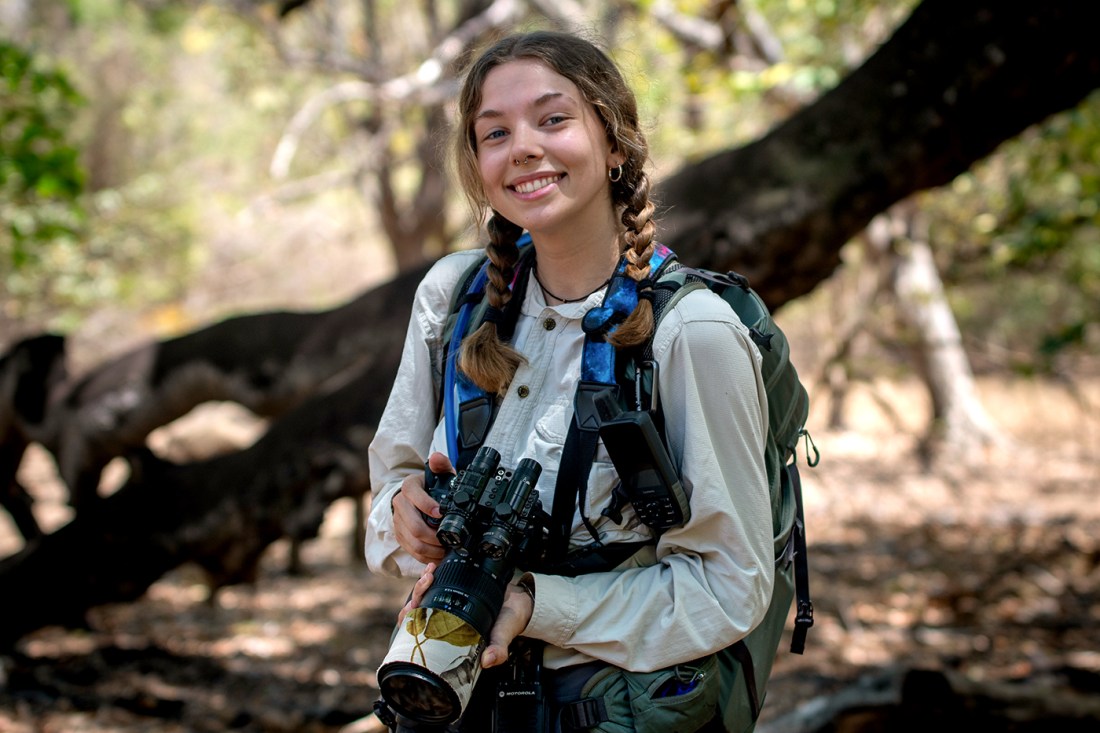
Orman previously worked with capuchin monkeys as part of her first co-op with Kids Saving the Rainforest, a wildlife rescue organization in Quepos, Costa Rica. But now she has a whole new sense of appreciation for these highly intelligent — and expressive — animals.
As a field research assistant, Orman is involved in a few of the organization’s projects.
One is focused on studying olfactory communication between capuchin males, as well as their hormonal and behavioral changes as they change rank in capuchin groups.
It involves Orman collecting biological samples, in this case urine, in non-invasive ways. To capture the scent, Orman uses a special pump to extract the air from the urine samples, which is then sent in tubes to Germany for further analysis.
Since the project is all about capturing undiluted smells, Orman has to be very careful about her own scent.
“Because we’re studying scents we have really strict rules about what we’re allowed to wear,” she says. “I have a specific shampoo, conditioner, laundry detergent, sunscreen. Everything is provided for me so that my odor isn’t disrupting the sample.”
Another project involves studying behavioral data by creating what is called an ethogram, or an inventory of behaviors for one specific animal. Through that kind of in-depth behavior analysis, she’s learned some surprising things about these monkeys.
“One of the behaviors that I didn’t know about was they do this thing we call hand-face where they’ll basically just sit with each other and put their hands on each other’s faces and kind of go into a meditative state for about 10 minutes,” Orman says. “It’s a way of forming trust and connection often between mother and daughter.”
But Orman says her favorite work involves something she never thought she’d have to learn on the job: wildlife photography.
“I’ll go out with a camera that has parallel lasers mounted on top of it — the lasers are calibrated to be 45 millimeters apart,” Orman says. “We take photos from a couple of different really specific angles so that we can see how these different body parts are changing as the men are rising and sinking in rank. … It’s really fun to follow a monkey and know when you get the perfect shot and know it will be useful in the data.”
Orman has learned a lot of unexpected skills. She’s had to figure out how to bushwhack through the dry yet dense forest in 90-degree weather. She’s also learned how to identify about 100 different monkeys by little telltale signs like a birthmark, scars or broken fingers.
At the same time, part of the joy of working with the Santa Rosa Primate Project, Orman says, is taking the skills she learned in the classroom, like creating ethograms, and using them in the field for the first time. She’s also been able to use the skills she learned at her last co-op in new ways.
Her second week on the job, a capuchin monkey had died and the team needed someone to conduct a necropsy, a common form of autopsy that Orman luckily learned how to perform at her last co-op. She volunteered to help but ended up leading the necropsy, and she did so all while using a headlamp to see what she was doing because the facility had lost power.
Experiences like this have helped Orman not only figure out what she wants to do next but how she wants help in shaping the future.
“At this point, I’d love to be able to combine veterinary medicine with research because I think that’s the best way to make an impact on conservation, by using them both to help advance our knowledge about the world we’re trying to protect,” Orman says. “Conservation and fighting climate change is one of the most urgent issues in the entire world, so I really felt obligated to work somehow [toward] solving that as much as I can.”
Cody Mello-Klein is a Northeastern Global News reporter. Email him at c.mello-klein@northeastern.edu. Follow him on X/Twitter @Proelectioneer.





